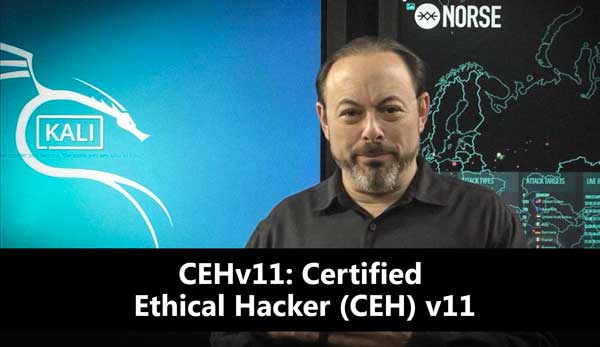
x
Course:
Outline
Module 01
- Introduction to Ethical Hacking
Module 02
- Footprinting and Reconnaissance
Module 03
- Scanning Networks
Module 04
- Enumeration
Module 05
- Vulnerability Analysis
Module 06
- System Hacking
Module 07
- Malware Threats
Module 08
- Sniffing
Module 09
- Social Engineering
Module 10
- Denial-of-Service
Module 11
- Session Hijacking
Module 12
- Evading IDS, Firewalls, and Honeypots
Module 13
- Hacking Web Servers
Module 14
- Hacking Web Applications
Module 15
- SQL Injection
Module 16
- Hacking Wireless Networks
Module 17
- Hacking Mobile Platforms
Module 18
- IoT and OT Hacking
Module 19
- Cloud Computing
Module 20
- Cryptography
Audience
- Information Security Analyst / Administrator
- Information Assurance (IA) Security Officer
- Information Security Manager / Specialist
- Information Systems Security Engineer / Manager
- Information Security Professionals / Officers
- Information Security / IT Auditors
- Risk / Threat/Vulnerability Analyst
- System Administrators
- Network Administrators and Engineers
Prerequisites
Students must have at least one year of hands-on experience in computer security.
What You Will Learn
- Key issues include plaguing the information security world, ethical hacking, information security controls, laws, and standards.
- Perform footprinting and reconnaissance using the latest footprinting techniques and tools as a critical pre-attack phase required in ethical hacking.
- Network scanning techniques and scanning countermeasures.
- Enumeration techniques and enumeration countermeasures.
- Vulnerability analysis to identify security loopholes in the target organization’s network, communication infrastructure, and end systems.
- System hacking methodology, steganography, steganalysis attacks, and covering tracks to discover system and network vulnerabilities.
- Different types of malware (Trojan, Virus, worms, etc.), system auditing for malware attacks, malware analysis, and countermeasures.
- Packet sniffing techniques to discover network vulnerabilities and countermeasures to defend sniffing.
- Social engineering techniques and how to identify theft attacks to audit humanlevel vulnerabilities and suggest social engineering countermeasures.
- DoS/DDoS attack techniques and tools to audit a target and DoS/DDoS countermeasures.
- Session hijacking techniques to discover network-level session management, authentication/authorization, cryptographic weaknesses, and countermeasures.
- Web server attacks and a comprehensive attack methodology to audit vulnerabilities in web server infrastructure, and countermeasures.
- Web application attacks and comprehensive web application hacking methodology to audit vulnerabilities in web applications, and countermeasures.
- SQL injection attack techniques, injection detection tools to detect SQL injection attempts, and countermeasures.
- Wireless encryption, wireless hacking methodology, wireless hacking tools, and Wi-Fi security tools.
- Mobile platform attack vector, android vulnerability exploitations, and mobile security guidelines and tools.
- Firewall, IDS and honeypot evasion techniques, evasion tools and techniques to audit a network perimeter for weaknesses, and countermeasures.
- Cloud computing concepts (Container technology, serverless computing), various threats/attacks, and security techniques and tools.
- Penetration testing, security audit, vulnerability assessment, and penetration testing roadmap.
- Threats to IoT and OT platforms and learn how to defend IoT and OT devices securely.
- Cryptography ciphers, Public Key Infrastructure (PKI), cryptography attacks, and cryptanalysis tools.
